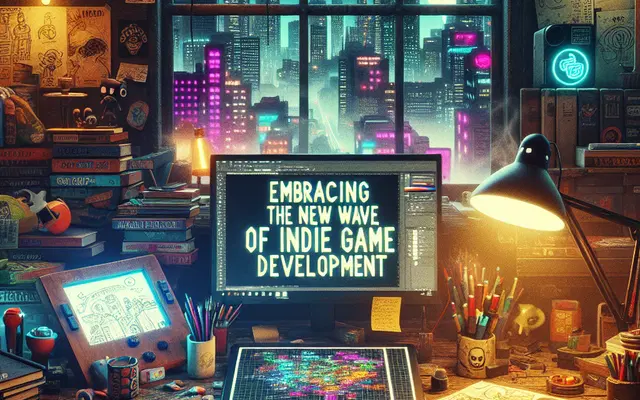Navigating the Landscape of Indie Game Releases

The Rise of Indie Games: Redefining Creativity in Game Design
The indie game scene has witnessed an unprecedented surge in creativity and innovation. Small teams and even solo developers are crafting experiences that rival the depth and polish of titles created by major studios. The rise of platforms like Steam and itch.io has provided these creators with the necessary exposure to showcase their original concepts. Consequently, the definition of captivating game design is being rewritten by the indie community, bringing fresh and diverse perspectives to the gaming world.
Indie game development is often characterized by passion-driven projects and personal storytelling. Behind the minimalist graphics or the retro-inspired gameplay, lies a journey filled with challenges and learning. Indie developers frequently wear multiple hats, managing design, programming, and marketing, all while navigating the complexities of the gaming industry. This multifaceted journey not only leads to the development of unique games but also contributes to the burgeoning ecosystem of indie game development.
For indie developers, successfully releasing a game requires more than just design and development chops. It demands a strategic approach to stand out in a crowded market. From leveraging social media and participating in game jams to eliciting feedback from early access and beta testing, indie devs must be shrewd marketers as well. Their strategies ensure that these labors of love reach their intended audience and receive the appreciation they rightfully deserve.
Behind the Scenes: The Journey of Indie Game Development
The indie game arena has blossomed into a hotbed of innovation, challenging the status quo of the gaming industry. Small teams and solo developers are crafting experiences that resonate with a growing audience, unshackled by the constraints of large corporations. This surge in indie game popularity is attributable to the unique and creative freedom that indie developers embody, allowing them to redefine what it means to create a game.
One of the most compelling aspects of indie game development is the personal touch that creators infuse into their projects. These developers often wear multiple hats, from programming to art design, imbuing each game with a distinct style and voice. Behind the scenes, the journey of bringing an indie game to life is a testament to their dedication, as they navigate everything from concept to coding, and from marketing to distribution, often with limited resources.
In order to thrive in the competitive space of game releases, indie developers must leverage innovative strategies to capture the attention of players and stand out in the market. This includes smart marketing tactics, engaging with communities on social media, and often, tapping into the power of crowdfunding platforms. By understanding the landscape of indie game releases and implementing successful strategies, these passionate developers can gain the recognition and success their games deserve.
Navigating the Market: Strategies for Successful Indie Game Releases
The indie gaming landscape is more than just a testament to creativity; it's a hotbed of innovation and unique experiences. As mainstream studios often gravitate towards tried-and-true franchises, independent developers are free to explore uncharted territories of game design. This freedom allows for the birth of games that push the boundaries of storytelling, art style, and gameplay mechanics. Particularly inspiring is the way many indie games incorporate personal narratives and culturally rich themes that resonate with diverse audiences.
Indie game development is a journey fraught with challenges, yet it brims with individualistic passion and vision. Developers behind these projects often wear multiple hats, from coding and design to marketing and community management. This multifaceted approach fits well with limited budgets and resources but requires a monumental amount of dedication and perseverance. The personal touch and authenticity of indie games stem from these intimate development processes, often resulting in a product that is both unique and deeply personal.
To succeed in the indie game market, developers must go beyond just creating a compelling game; they must navigate the intricate dance of marketing and consumer engagement. Strategies such as engaging social media campaigning, forging partnerships with influencers, and leveraging digital distribution platforms are crucial for visibility. Early access releases can generate valuable feedback and create a buzz around the game prior to its full launch. Success in this competitive market relies not only on the game's quality but also on strategic planning and a keen understanding of the gaming community's pulse.












